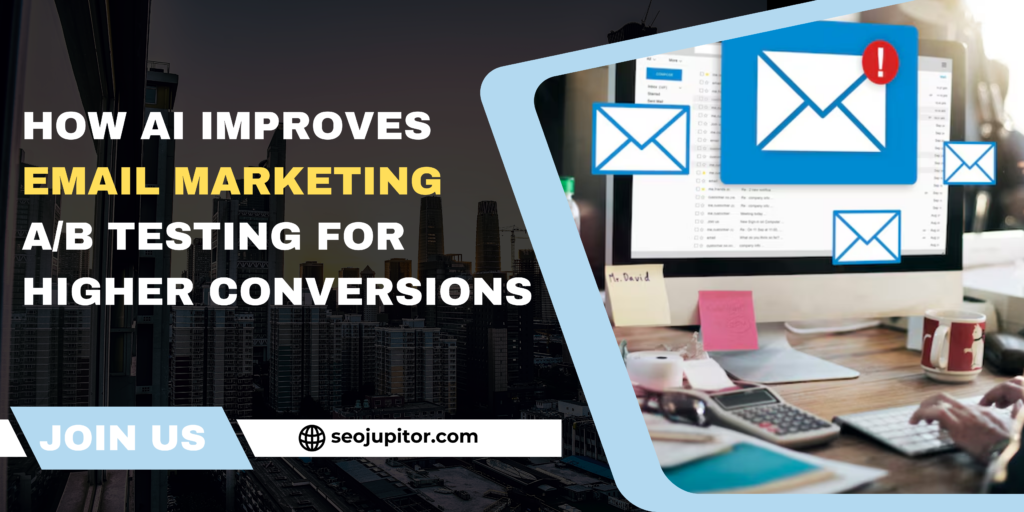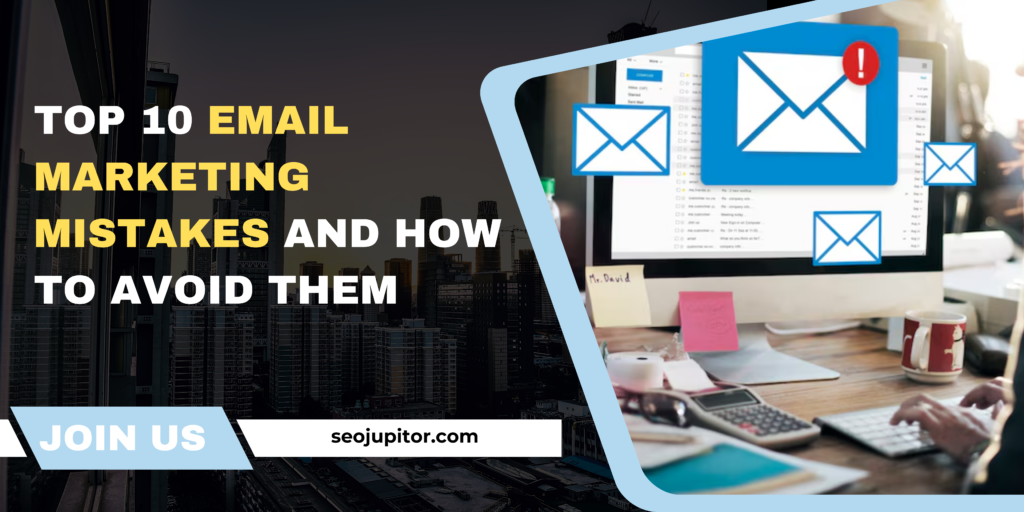Email marketing remains one of the most powerful tools for driving conversions and building strong relationships with your audience. However, to truly see results, it’s crucial to design email campaigns that not only capture attention but also drive actions like purchases, sign-ups, and other valuable interactions. High-converting email campaigns don’t just happen by chance—they’re the result of well-thought-out strategies and techniques. In this guide, we’ll share the top strategies and tips for creating emails that convert.
1. Understand Your Audience
Before you start crafting your email, it’s essential to have a clear understanding of your target audience. The more you know about your audience’s interests, behavior, and pain points, the better you can tailor your email campaigns to meet their needs.
Key Tip: Segment your email list into categories (e.g., first-time visitors, loyal customers, inactive subscribers). By doing so, you can send personalized and relevant content to each group, increasing the likelihood of conversion.
2. Craft Compelling Subject Lines
The subject line is the first thing recipients see when they open their inbox, and it plays a critical role in whether your email gets opened or ignored. A compelling subject line should grab attention, spark curiosity, and entice the reader to open the email.
Key Tip: Keep your subject lines short (under 50 characters) and clear. Personalizing the subject line, such as including the recipient’s name or referencing their previous activity, can also increase open rates. Always test different subject lines to see which ones resonate the most with your audience.
Read here – How AI Improves Email Marketing A/B Testing for Higher Conversions
3. Use Personalization in Your Emails
Personalization goes beyond using your subscriber’s name. The more you can tailor the content based on the recipient’s previous behavior, preferences, and purchase history, the more likely they are to engage. Personalized emails build stronger connections with your audience and show them that you understand their needs.
Key Tip: Use dynamic content to showcase products or services based on previous interactions. For example, if a subscriber has previously purchased a pair of shoes, you can recommend other footwear or related accessories in future emails.
4. Optimize for Mobile Devices
With over half of emails being opened on mobile devices, it’s essential that your emails are optimized for mobile viewing. Poorly formatted emails with hard-to-read text and tiny buttons can frustrate mobile users and result in lost conversions.
Key Tip: Use a responsive email design that adjusts to different screen sizes. Ensure that your text is legible, and buttons are large enough to tap easily. Test your emails on various devices before sending to ensure they look great across all platforms.
5. Create a Strong Call to Action (CTA)
A clear, compelling call to action (CTA) is one of the most important elements of a high-converting email. Without a CTA, your subscribers might not know what action you want them to take. Whether it’s to make a purchase, download a free resource, or sign up for a webinar, your CTA should be prominently displayed and easy to follow.
Key Tip: Use action-oriented language in your CTA, such as “Shop Now,” “Get Your Discount,” or “Download Today.” Keep it simple and make sure it’s above the fold (viewable without scrolling). Additionally, use contrasting colors for your CTA buttons to make them stand out.
6. Leverage A/B Testing
One of the best ways to optimize your email campaigns for higher conversions is through A/B testing. By testing different elements of your emails, such as subject lines, CTAs, images, and copy, you can see what resonates best with your audience and make data-driven decisions to improve future campaigns.
Key Tip: Test one element at a time to ensure you can accurately measure its impact. For example, test different subject lines for the same email or compare two versions of a CTA. Analyze the results to determine which version led to the highest conversion rate and replicate that strategy in future emails.
7. Provide Value in Your Content
High-converting emails are those that offer real value to the recipient. Rather than just pushing a product or service, your email should educate, entertain, or solve a problem for your audience. If subscribers feel that your emails provide useful information, they’re more likely to engage with your content and take action.
Key Tip: Offer special discounts, exclusive offers, or helpful content, such as blog posts, industry insights, or how-to guides. Providing value builds trust with your audience, making them more inclined to convert when you do ask for action.
8. Use Clear and Concise Copy
When crafting your email copy, avoid long, complicated sentences that may overwhelm the reader. Your copy should be clear, concise, and focused on one key message. Make it easy for the reader to understand what you want them to do and why they should do it.
Key Tip: Use short paragraphs and bullet points to break up large blocks of text. Keep your language simple and actionable, and make your emails skimmable for busy readers. The more digestible your content, the easier it is for subscribers to take action.
9. Build Urgency and FOMO (Fear of Missing Out)
Creating a sense of urgency can be a powerful motivator for conversions. If you can convince your subscribers that time is running out or that they’ll miss out on a special offer, they’re more likely to act quickly.
Key Tip: Use phrases like “limited-time offer,” “only a few left,” or “expires in 24 hours” to create urgency. Adding a countdown timer in your email can visually reinforce the limited nature of the offer, encouraging immediate action.
10. Monitor and Analyze Your Results
After sending your email campaigns, it’s essential to monitor their performance and analyze the results. Metrics like open rates, click-through rates (CTR), conversion rates, and unsubscribe rates provide valuable insights into the effectiveness of your campaign. By continuously reviewing your results, you can identify areas of improvement and optimize your future campaigns.
Key Tip: Use email marketing analytics tools to track your KPIs. Regularly review your campaign performance and adjust your strategies accordingly. Over time, this will allow you to refine your approach and continually improve your email marketing ROI.
Conclusion
Creating high-converting email campaigns requires a combination of strategy, creativity, and ongoing testing. By understanding your audience, crafting compelling subject lines, personalizing your content, and optimizing your emails for mobile devices, you can improve engagement and increase conversions. Remember to include a strong call to action, A/B test your emails, and provide value to your subscribers. With these strategies in place, you’ll be well on your way to designing email campaigns that deliver real results.
By following these tips and continuously analyzing and optimizing your campaigns, you can ensure your email marketing efforts will generate significant returns for your business. Happy emailing!




Let’s make tonight unforgettable… your place or mine? – https://rb.gy/es66fc?wery
Hi, just required you to know I he added your site to my Google bookmarks due to your layout. But seriously, I believe your internet site has 1 in the freshest theme I??ve came across. It extremely helps make reading your blog significantly easier.
I was wondering if you ever thought of changing the layout of your site? Its very well written; I love what youve got to say. But maybe you could a little more in the way of content so people could connect with it better. Youve got an awful lot of text for only having 1 or 2 pictures. Maybe you could space it out better?
Greetings Friend,
I trust this message finds you in excellent health and spirits.
I’m reaching out with a unique and highly profitable business opportunity that I believe aligns with your vision and potential. This proposal holds promise for substantial returns and long-term partnership.
If this interests you, kindly reply only to this email: changchih775@gmail.com. I will respond exclusively through this channel.
Looking forward to your response.
Warm regards,
Dir. Chih-Chien Chang
changchih775@gmail.com
Thanks for sharing this valuable post! Quick heads-up— the cheapest cloud web hosting just dropped its prices even further, but only until April 17th! Snag this unbeatable deal before it’s gone!